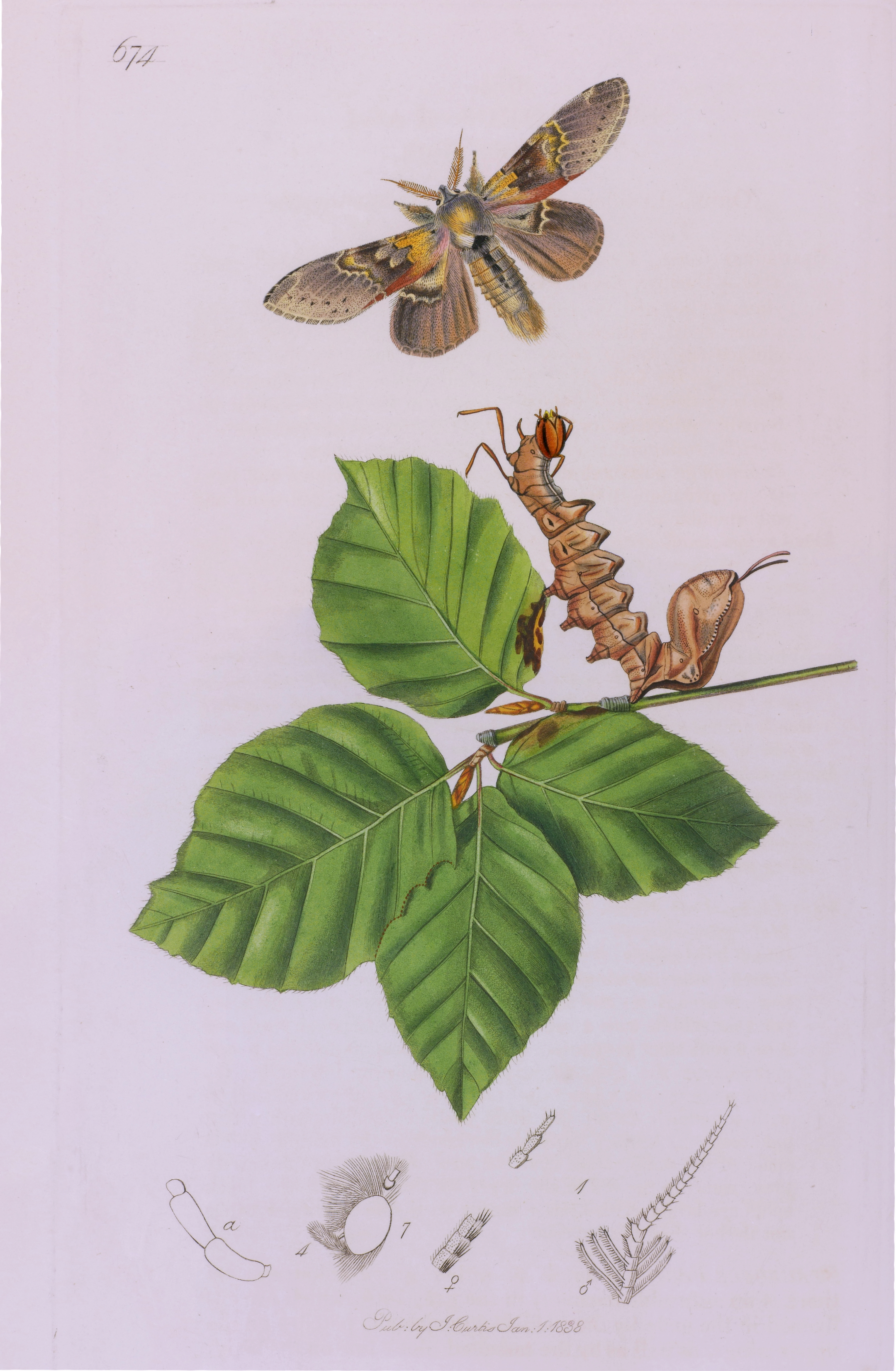|
Agriotypinae
Agriotypinae is a subfamily of Ichneumonidae, ichneumonid parasitoid wasps found in the Palaearctic region. This subfamily contains only one genus, ''Agriotypus''. The known species are aquatic idiobiont ectoparasitoids of Trichoptera pupae. There has been disagreement over the taxonomic placement of ''Agriotypus''. It has variously been placed in Proctotrupoidea and considered a separate family of Ichneumonoidea. Life cycle The development of ''Agriotypus armatus'' has been documented on the host ''Silo pallipes'' in a stream in South-West England''.'' The life cycle of the wasps took one year, with adults present in May and June. Eggs were laid in the pupae or prepupae of the host. The larvae under went 5 larval stages before overwintering as adults in their pupal case. Larval instars 1-4 fed externally on the host, while instar 5 rapidly consumed the entire host body. Before pupating, the larvae built a separate pupal case from silk within the trichopteran pupal case. The wasp ... [...More Info...] [...Related Items...] OR: [Wikipedia] [Google] [Baidu] |
Agriotypus
''Agriotypus'' is a genus of insect belonging to the family Ichneumonidae first described by John Curtis (entomologist), John Curtis in 1832. Species * ''Agriotypus armatus'' Curtis, 1832 * ''Agriotypus changbaishanus'' Chao, 1981 * ''Agriotypus chaoi'' Bennett, 2001 * ''Agriotypus dui'' Tang, He & Chen, 2022 * ''Agriotypus gracilis'' Waterston, 1930 * ''Agriotypus himalensis'' Mason, 1971 * ''Agriotypus jilinensis'' Chao, 1981 * ''Agriotypus kambaitensis'' Gupta & Chandra, 1975 * ''Agriotypus lui'' Chao, 1986 * ''Agriotypus maae'' Tang, He & Chen, 2022 * ''Agriotypus maculiceps'' Chao, 1992 * ''Agriotypus masneri'' Bennett, 2001 * ''Agriotypus morsei'' Tang, He & Chen, 2022 * ''Agriotypus silvestris'' Konishi & Aoyagi, 1994 * ''Agriotypus succinctus'' (Chao, 1992) * ''Agriotypus taishunensis'' Tang, He & Chen, 2022 * ''Agriotypus tangi'' Chao, 1992 * ''Agriotypus townesi'' Chiu, 1986 * ''Agriotypus wangpiensis'' 2024 * ''Agriotypus yangae'' Tang, He & Chen, 2022 * ''Agriotypus ... [...More Info...] [...Related Items...] OR: [Wikipedia] [Google] [Baidu] |
Ichneumonidae
The Ichneumonidae, also known as the ichneumon wasps, Darwin wasps, or ichneumonids, are a family (biology), family of parasitoid wasps of the insect order Hymenoptera. They are one of the most diverse groups within the Hymenoptera with roughly 25,000 species currently described. However, this likely represents less than a quarter of their true Species richness, richness as reliable estimates are lacking, along with much of the most basic knowledge about their ecology, Species distribution, distribution, and evolution.Quicke, D. L. J. (2015). The braconid and ichneumonid parasitoid wasps: biology, systematics, evolution and ecology. Chichester: John Wiley & Sons, Ltd. Ichneumonid wasps, with very few exceptions, attack the immature stages of Holometabolism, holometabolous insects and spiders, eventually killing their hosts. They thus fulfill an important role as regulators of insect populations, both in natural and semi-natural systems, making them promising agents for Biological p ... [...More Info...] [...Related Items...] OR: [Wikipedia] [Google] [Baidu] |
Alexander Henry Haliday
Alexander Henry Haliday (1806–1870, also known as Enrico Alessandro Haliday, Alexis Heinrich Haliday, or simply Haliday) was an Irish entomologist. He is primarily known for his work on Hymenoptera, Diptera, and Thysanoptera, but worked on all insect orders and on many aspects of entomology. Haliday was born in Carnmoney, Co. Antrim later living in Holywood, County Down, Ireland. A boyhood friend of Robert Templeton, he divided his time between Ireland and Lucca, where he co-founded the Italian Entomological Society with Camillo Rondani and Adolfo Targioni Tozzetti. He was a member of the Royal Irish Academy, the Belfast Natural History Society, the Microscopical Society of London, and the Galileiana Academy of Arts and Science, as well as a fellow of the (now Royal) Entomological Society of London. Alexander Haliday was among the greatest dipterists of the 19th century and one of the most renowned British entomologists. His achievements were in four main fields: desc ... [...More Info...] [...Related Items...] OR: [Wikipedia] [Google] [Baidu] |
British Entomology
''British Entomology'' is a classic work of entomology by John Curtis, FLS. It is subtitled ''Being Illustrations and Descriptions of the Genera of Insects found in Great Britain and Ireland: Containing Coloured Figures from Nature of the Most Rare and Beautiful Species, and in Many Instances of the Plants Upon Which they are Found''. The work comprises 770 hand-coloured, copper-plate engravings, each 8 by inches (20×14 cm), together with two or more pages of text. The work was issued in monthly parts over 16 years, each part comprising three or more (usually four) plates. Plates were initially printed on James Whatman's Turkey Mill paper and then (circa 1832) on Rye Mill paper. It was a masterpiece of the engraver's and colourist's art, described by the eminent French naturalist Georges Cuvier as the "paragon of perfection". Close examination of a proof set of plates (see below) reveals an obsessive attention to detail. The shading of the foliage is typically achie ... [...More Info...] [...Related Items...] OR: [Wikipedia] [Google] [Baidu] |
Idiobiont
In evolutionary ecology, a parasitoid is an organism that lives in close association with its host at the host's expense, eventually resulting in the death of the host. Parasitoidism is one of six major evolutionary strategies within parasitism, distinguished by the fatal prognosis for the host, which makes the strategy close to predation. Among parasitoids, strategies range from living inside the host (''endoparasitism''), allowing it to continue growing before emerging as an adult, to paralysing the host and living outside it (''ectoparasitism''). Hosts can include other parasitoids, resulting in hyperparasitism; in the case of oak galls, up to five levels of parasitism are possible. Some parasitoids influence their host's behaviour in ways that favour the propagation of the parasitoid. Parasitoids are found in a variety of taxa across the insect superorder Endopterygota, whose complete metamorphosis may have pre-adapted them for a split lifestyle, with parasitoid larvae ... [...More Info...] [...Related Items...] OR: [Wikipedia] [Google] [Baidu] |
Plastron (arthropod)
A gill () is a respiratory organ that many aquatic organisms use to extract dissolved oxygen from water and to excrete carbon dioxide. The gills of some species, such as hermit crabs, have adapted to allow respiration on land provided they are kept moist. The microscopic structure of a gill presents a large surface area to the external environment. Branchia (pl. branchiae) is the zoologists' name for gills (from Ancient Greek ). With the exception of some aquatic insects, the filaments and lamellae (folds) contain blood or coelomic fluid, from which gases are exchanged through the thin walls. The blood carries oxygen to other parts of the body. Carbon dioxide passes from the blood through the thin gill tissue into the water. Gills or gill-like organs, located in different parts of the body, are found in various groups of aquatic animals, including mollusks, crustaceans, insects, fish, and amphibians. Semiterrestrial marine animals such as crabs and mudskippers have gill chambe ... [...More Info...] [...Related Items...] OR: [Wikipedia] [Google] [Baidu] |
Silo Pallipes
''Silo pallipes'' is a species of caddisfly found in rocky streams and rivers throughout Europe. Its life cycle lasts a year. References Integripalpia Insects of Europe Taxa named by Johan Christian Fabricius Insects described in 1781 Aquatic insects {{Trichoptera-stub ... [...More Info...] [...Related Items...] OR: [Wikipedia] [Google] [Baidu] |
Proctotrupoidea
Proctotrupoidea is a hymenopteran superfamily containing seven extant families, though others have been recognized in the past, most of these having been removed to a recently erected superfamily Diaprioidea. Of the remaining families, only Proctotrupidae contains a substantial number of species, with over 400 described. The others are small, often relictual groups. See links for individual families for details of life history and diversity. See also Tree of Life Apocrita shows polyphyletic Proctotrupoidea. References Apocrita superfamilies {{Apocrita-stub ... [...More Info...] [...Related Items...] OR: [Wikipedia] [Google] [Baidu] |
Trichoptera
The caddisflies, or order Trichoptera, are a group of insects with aquatic larvae and terrestrial adults. There are approximately 14,500 described species, most of which can be divided into the suborders Integripalpia and Annulipalpia on the basis of the adult mouthparts. Integripalpian larvae construct a portable casing to protect themselves as they move around looking for food, while Annulipalpian larvae make themselves a fixed retreat in which they remain, waiting for food to come to them. The affinities of the small third suborder Spicipalpia are unclear, and molecular analysis suggests it may not be monophyletic. Also called sedge-flies or rail-flies, the adults are small moth-like insects with two pairs of hairy membranous wings. They are closely related to the Lepidoptera (moths and butterflies) which have scales on their wings; the two orders together form the superorder Amphiesmenoptera. The aquatic larvae are found in a wide variety of habitats such as streams, river ... [...More Info...] [...Related Items...] OR: [Wikipedia] [Google] [Baidu] |
Subfamily
In biological classification, a subfamily (Latin: ', plural ') is an auxiliary (intermediate) taxonomic rank, next below family but more inclusive than genus. Standard nomenclature rules end subfamily botanical names with "-oideae", and zoological names with "-inae". See also * International Code of Nomenclature for algae, fungi, and plants * International Code of Zoological Nomenclature * Rank (botany) * Rank (zoology) In biological classification, taxonomic rank is the relative level of a group of organisms (a taxon) in an ancestral or hereditary hierarchy. A common system consists of species, genus, family, order, class, phylum, kingdom, domain. While ... Sources {{biology-stub ... [...More Info...] [...Related Items...] OR: [Wikipedia] [Google] [Baidu] |
Genus
Genus ( plural genera ) is a taxonomic rank used in the biological classification of extant taxon, living and fossil organisms as well as Virus classification#ICTV classification, viruses. In the hierarchy of biological classification, genus comes above species and below family (taxonomy), family. In binomial nomenclature, the genus name forms the first part of the binomial species name for each species within the genus. :E.g. ''Panthera leo'' (lion) and ''Panthera onca'' (jaguar) are two species within the genus ''Panthera''. ''Panthera'' is a genus within the family Felidae. The composition of a genus is determined by taxonomy (biology), taxonomists. The standards for genus classification are not strictly codified, so different authorities often produce different classifications for genera. There are some general practices used, however, including the idea that a newly defined genus should fulfill these three criteria to be descriptively useful: # monophyly – all descendants ... [...More Info...] [...Related Items...] OR: [Wikipedia] [Google] [Baidu] |
Palaearctic
The Palearctic or Palaearctic is the largest of the eight biogeographic realms of the Earth. It stretches across all of Eurasia north of the foothills of the Himalayas, and North Africa. The realm consists of several bioregions: the Euro-Siberian region; the Mediterranean Basin; the Sahara and Arabian Deserts; and Western, Central and East Asia. The Palaearctic realm also has numerous rivers and lakes, forming several freshwater ecoregions. The term 'Palearctic' was first used in the 19th century, and is still in use as the basis for zoogeographic classification. History In an 1858 paper for the ''Proceedings of the Linnean Society'', British zoologist Philip Sclater first identified six terrestrial zoogeographic realms of the world: Palaearctic, Aethiopian/Afrotropic, Indian/Indomalayan, Australasian, Nearctic, and Neotropical. The six indicated general groupings of fauna, based on shared biogeography and large-scale geographic barriers to migration. Alfred Wallace ad ... [...More Info...] [...Related Items...] OR: [Wikipedia] [Google] [Baidu] |






